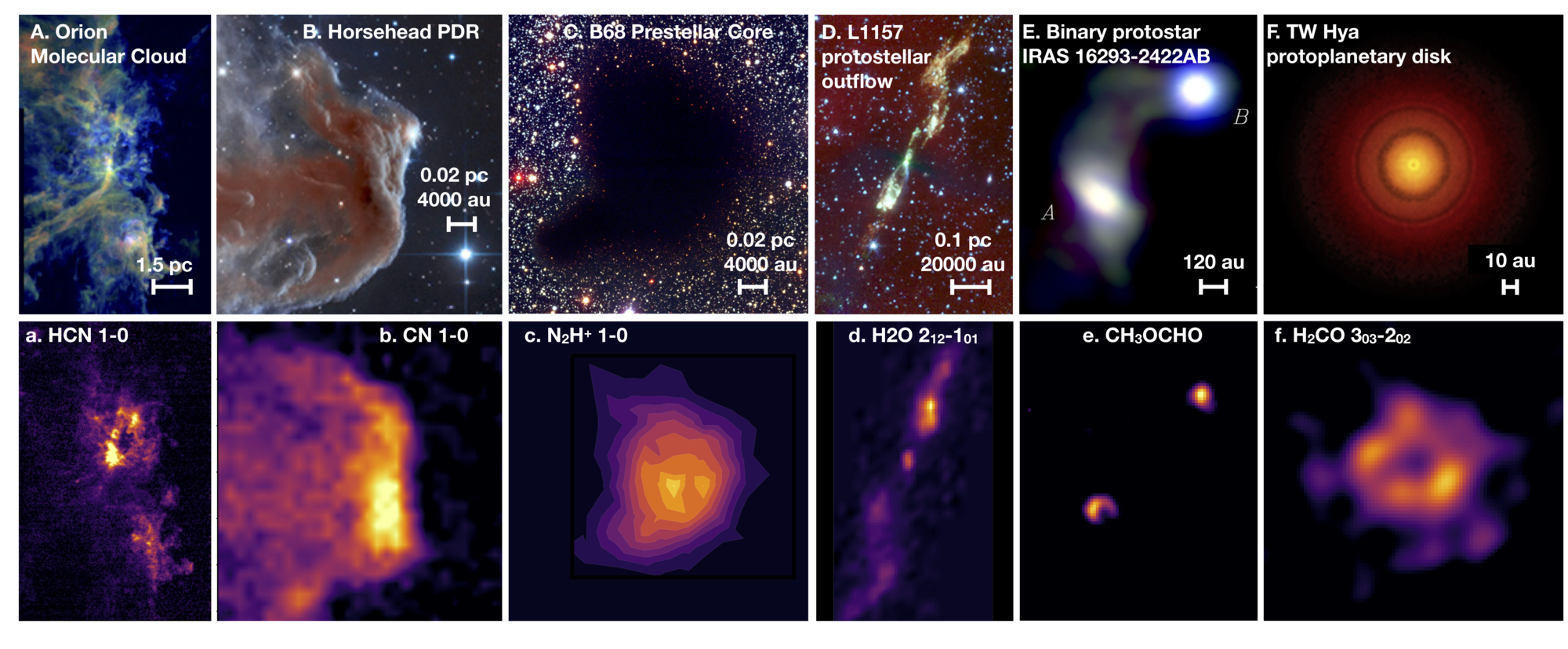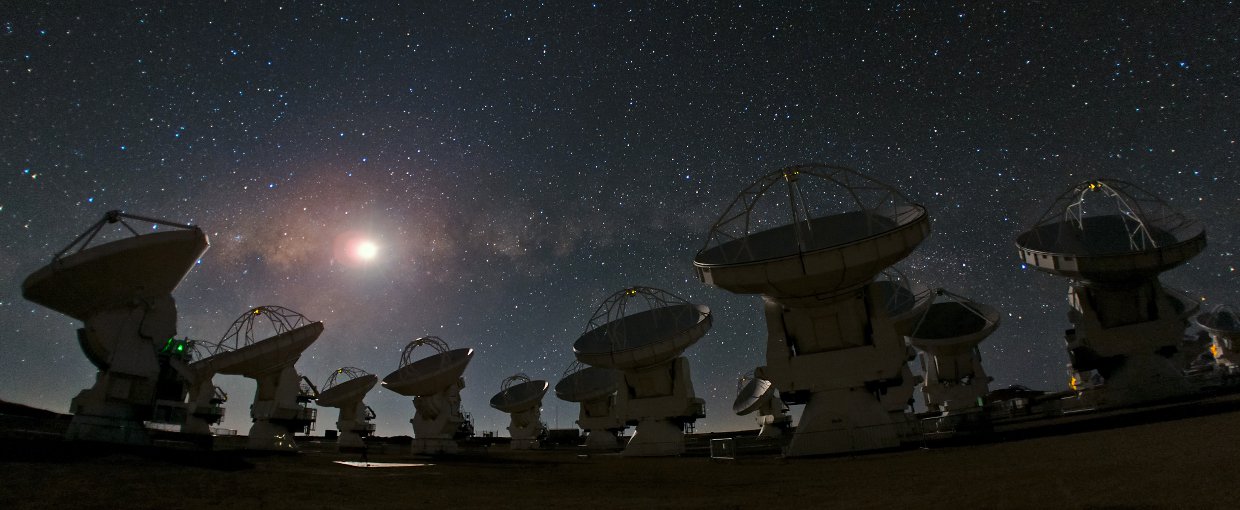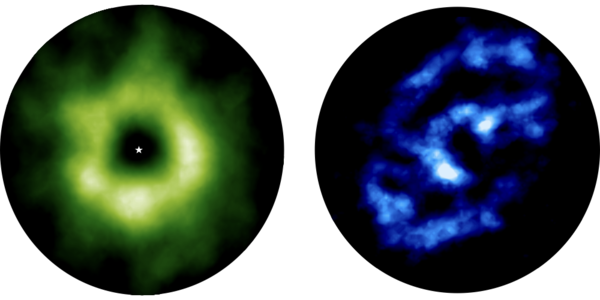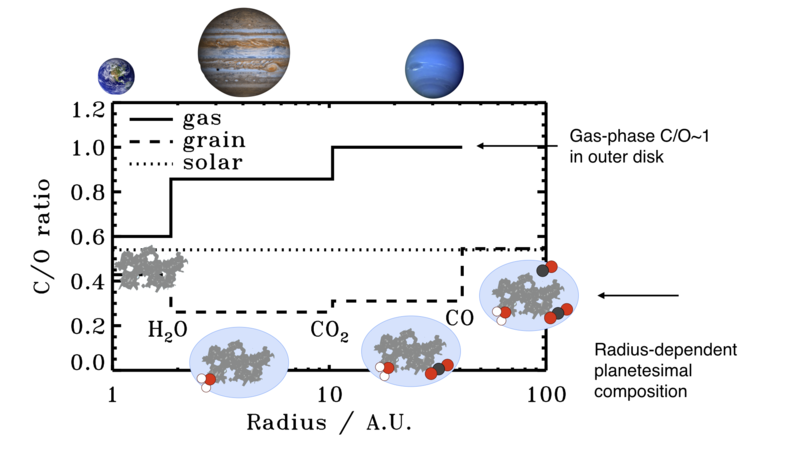In the Öberg Astrochemistry Group we use astronomical observations, laboratory ice experiments and astrochemical theory to explore
- the chemistry present in planet-forming disks and its effects on planet compositions,
- the physical chemical processes that control the observed chemical structures,
- and the development of new molecular probes of star and planet formation.
Planets form in gas- and dust-rich disks around young stars. These disks are a by-product of star formation, which begins with the collapse of an interstellar cloud to form an embedded protostar and further a star+disk system.

At each step of star and planet formation there are chemical reactions which govern the formation and destruction of molecules. Some of molecules observed in disks are inherited from the natal cloud, while others are the product of chemistry in the disk. The complete chemical evolution, from cloud formation to the end-states of the planet-forming disks therefore controls what pre-biotic chemistry that eventually shows up in comets and planets. Molecules observed at different stages of this evolution are shown below.

Much of the chemical evolution takes place on the surfaces of interstellar grains, microscopic silicate dust that becomes embedded in icy mantles in interstellar clouds. Laboratory experiments are essential to characterize the chemistry and physics that occur in these icy grain mantles.
Finally observations of molecules are often the best, and sometimes the only way to obtain information about the star and planet forming process. To develop such probes requires information both about molecular excitation and chemistry.
Astrochemical Origins of Planetary Compositions
Planet forming disks are common around young stars. Their chemical composition and physical characteristics set the mass and chemical compositions of nascent planets. We can directly observe the distrubtion of different molecules in these disks using the Atacama Large Millimeter and submillimeter Array (ALMA).

We have used ALMA to obtain the first image of a disk snow line![]() (in this case CO ice traced by N2H+), to detect the complex organics
(in this case CO ice traced by N2H+), to detect the complex organics![]() , to assess the isotopic fractionation chemistry
, to assess the isotopic fractionation chemistry![]() , the presence of organic ice chemistry, and the distribution of HCN and small hydrocarbons; HCN is of especial interest since it is integral to some origins of life scenarios here on Earth.
, the presence of organic ice chemistry, and the distribution of HCN and small hydrocarbons; HCN is of especial interest since it is integral to some origins of life scenarios here on Earth.

Using astrochemical simulations and toy models we explore how the time dependent chemistry present in disks affect the bulk and organic composition of planets and planetesimals assembling at different distances away from the central star. An important example is that the gas-phase and solid C/O ratio changes with disk radius![]() because of sequential freeze-out of the main carriers of carbon and oxygen in disks. We therefore expect that rocky planets and planetary cores and planet atmospheres will have different elemental compositions and therefore different chemical evolutions dependent on how close or far away from their star they assemble.
because of sequential freeze-out of the main carriers of carbon and oxygen in disks. We therefore expect that rocky planets and planetary cores and planet atmospheres will have different elemental compositions and therefore different chemical evolutions dependent on how close or far away from their star they assemble.

Astrochemical Pathways to Complex Organic Molecules and the Gas-Grain Interface
Icy grain mantles are chemical factories. This is where water, methanol and most prebiotically interesting molecules are proposed to form. The efficiency of this chemistry depends fundamentally on the availability of reactants and the mobility of these reactants on ice and grain surfaces and in ice interiors. At low temperatures most reactions involve radicals, atoms or ions, which generally have low or non-existent reaction barriers.
We use a specially designed ultra-high vacuum surface science set-up to investigate the the production efficiencies and branching ratios of different radicals in ices exposed to UV, X-rays and electrons (the main sources of energetic radiation in space) and the efficiencies and underlying mechanisms of radical, atom and molecule diffusion in thin ice films that simulate icy grain mantles in space. The results are used together with astrochemical theory to predict ice compositions, focused on prebiotic molecules, during star and planet formation. Key papers on photochemistry![]() , and ice diffusion
, and ice diffusion![]() .
.
We also pursue experiments to constrain the interactions between grain surfaces and gas in the interstellar medium. Gas and grain chemistry are connected through freeze-out or condensation of gas-phase molecules onto grains, and through thermal and non-thermal desorption or sublimation of ices into the gas-phase. Non-thermal desorption is especially poorly understood and a focus within the group. Key papers on broadband![]() and frequency
and frequency![]() resolved ice photodesorption.
resolved ice photodesorption.
